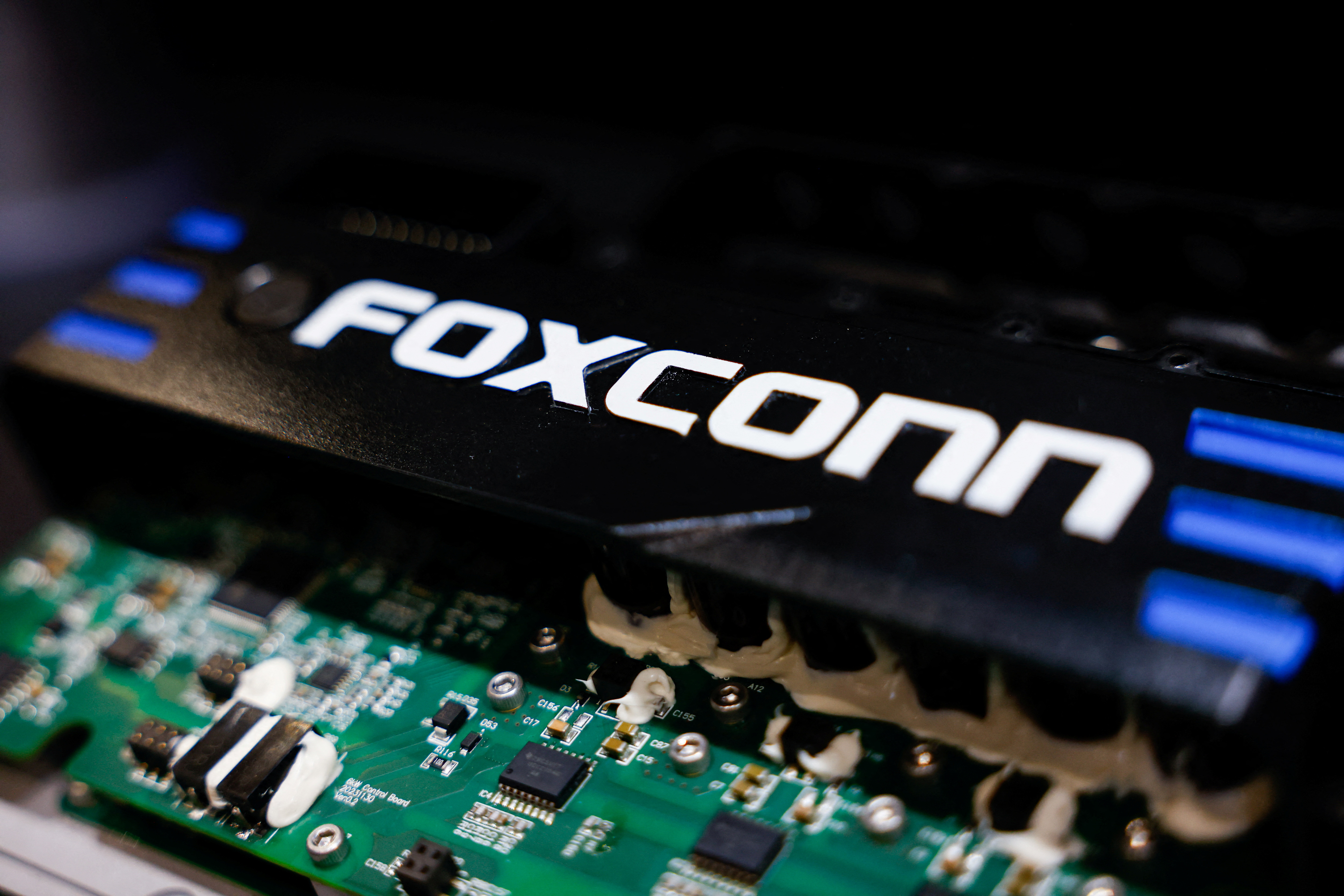A sign of Foxconn is seen at a glass door inside its office building in Taipei, Taiwan November 12, 2020. REUTERS

A man walks past the Foxconn building after a New Year prayer in New Taipei City, Taiwan, February 1, 2023. REUTERS

A Foxconn electric two-wheeler powertrain system is displayed at Foxconn’s annual tech day in Taipei, Taiwan October 8, 2024. REUTERS
Summary
- Q3 net profit rises 14% yr/yr, better than forecast)
- Q3 revenue rose +20% yr/yr, beating expectations
- Foxconn bullish on AI server demand
- Foxconn’s shares have doubled so far this year
- Q3 earnings call at 0700 GMT on Thursday
TAIPEI, Nov 14 (Reuters) – Taiwan’s Foxconn (2317. TW), the world’s largest contract electronics maker, reported on Thursday a better-than-expected 14% rise in quarterly profit underpinned by robust demand for artificial intelligence servers.
Last month, the company said third-quarter revenue jumped 20% from a year earlier, beating expectations to post its highest-ever revenue for that quarter on strong sales of AI servers.
Net profit for July-September for Apple’s (AAPL.O), iPhone assembler came in at T$49.3 billion ($1.5 billion), according to Reuters calculations.
That marked a fifth consecutive quarter of profit growth and compared with a T$46.3 billion LSEG consensus estimate of 14 analysts.
Foxconn said last month it was building in Mexico the world’s largest manufacturing facility for bundling Nvidia’s (NVDA.O), GB200 Superchips, a key component of the U.S. firm’s next-generation Blackwell family computing platform.
Underscoring Foxconn’s rosy prospects, October sales hit a record high for the month and the company, formally called Hon Hai Precision Industry, has said it expects fourth-quarter revenue to grow year-on-year.
It does not provide numerical guidance.
Foxconn’s shares have doubled so far in 2024, beating the broader market’s (.TWII), 28% gain, buoyed by its confident outlook on AI.
They closed down 1.4% on Thursday ahead of the earnings release.
($1 = 32.4140 Taiwan dollars)
From how an AI artist broke records with a painting to an algorithm that might tell us how pigs feel.
Reporting by Ben Blanchard; Editing by Shri Navaratnam





